|
|
Review of Bluetooth-headset Jawbone
Sales package
- Headset
- AC adaptor
- USB adaptor
- Spare ear buds
- Spare ear loops
- User Guide
I was craving for this particular device for a while, but never managed to get my mitts on it. To be more precise, I had my chances, but the fate itself seemed to oppose me – for example, I asked some of my acquaintances to bring it from abroad, but every single affair like that ended up in smoke (“Oh, I completely forgot!”, “Had no money, sorry”, “They took it from me at the customs!” and so on). Now that all these mishaps are behind, I’m holding the Jawbone in my hands and there is no way it will get away from me.
Prehistory
So happens that I’m kicking off the review not with a pretty much cliched device overview, but with how this headset has actually come to life. The headset is manufactured by Aliph, here is the link to its page, and as you see, it automatically redirects you to www.jawbone.com, the headset’s official home. The Bluetooth-powered Jawbone we are about to put through it paces hasn’t come out of nowhere – there was another gadget bearing the same name, yet it had wires and retained almost exactly the same technological talents. And what was this for, I hear you ask? Putting it simply, as far as I know, Aliph is not just another headset maker taking a shot at the market, since its engineers were engaged in a project (initiated by the US Department of Defense) for creating new type of gear for soldiers of the 21st century. The crux of the task was pretty simple: to make up a communication device that would provide crystal clear voice quality in battle, so that people on the other end could make sense of your words among explosions, gun shots, screams etc. I have no idea whether they had coped with the task, whether they really had come up with this product, but the fact of the matter was that their solutions were applied in the Jawbone’s wired iteration.
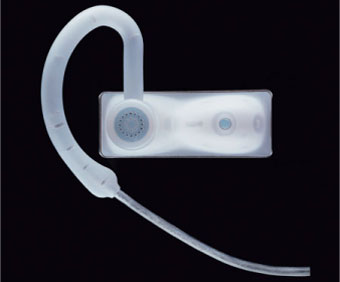
It hit the market in 2004, and back then many Russian journalists were befuddled by the connection between the Jawbone and something going by the name of Yves Behar, featured in the official press-releases. But in truth, Yves Behar is a known designer who has developed the looks of the Jawbone (for both editions) for Aliph – you can easily see loads of carryovers from the old headset version in the new Jawbone. All this confusion aside, the headset, back then, was going for a whopping 150 USD, but keep in mind that the finest wireless solutions retailed for pretty much the same money, or even cheaper. And as far as I understand, the Jawbone passed unnoticed and never saw stellar sales, nevertheless, design-wise, and, well, in terms of the technologies it adopted, it was one sweet gadget.

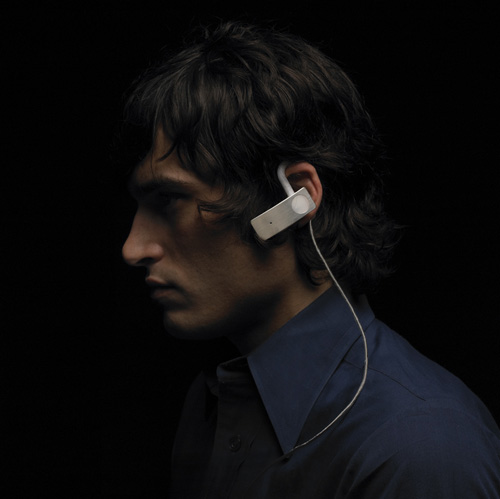
Some words on the headset’s design and the goodies it packs. For starters, follow this link to learn more about the noise suppressing system. To cut a long story shot, this is the way it works (of course if I’m wrong, you can always throw me a message in our forums): there are two microphones and the voice activity detector (VAD), that must be placed against your cheek and actually touch it. In fact it is VAD that reads all words from your jaw bones, to be more specific, it detects vibrations and enables the mic responsible for your voice recognition. That’s where the Jawbone name comes from – easy to guess! Another mic is housed on the front fascia and its major task is to cancel all background noises. Both the voice you hear and the incoming audio are handled by a stand-alone system reducing outside noise and amplifying your own voice. That’s how come you hear crystal clear audio in the earpiece, and what is more, people on the other end will never complain about subpar quality of your voice, wherever you are. But is that really so? We will be breaking down its feature set below, and for now, let’s focus on how the Jawbone Bluetooth Headset is being marketed. It seems like the company has learned from the letdowns of its previous solutions – the issue with sockets for different phone models and the cord setup itself, which usually tangled and was a hassle when driving a car, and also the lack of that “final touch” or the ultimate technological talent (a consumer won’t ponder over what super-advanced technologies some device has got inside – seeing a cable going out of its casing is enough to put him off). That’s why in 2006 some teasers had popped up across the Web, and late in 2006 they announced the Jawbone. And in course of 2007, the Jawbone has undoubtedly become of the most recognizable accessories for mobile phones in the world. Furthermore, it collected a number of design awards (specifically, Red Dot), it also was tried out by hundreds of my colleagues across the globe and was very much appreciated. If it was an advertising message, probably, that would be the last words in it, but fortunately, it is not this kind of write-up. That’s why when I learned about that incredibly high rating the Jawbone scored at Cnet.com, I couldn’t help looking through that review, trying to see how adequate it was. And I didn’t like what I found out, specifically how ‘perfect’ the Jawbone looked in its editor’s take. But in reality there are many things requiring some clarification.
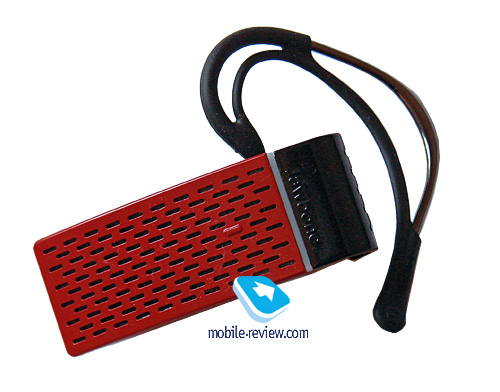
I will be pointing at the similarity between the Jawbone and Apple’s products throughout this entire review, so it is not a one-off here, as in fact they are ‘similar’ in the sense of marketing. Seemingly, over at Aliph they have picked the same way, and relegated their efforts to creating a phenomenon, rather than a commercial product – not a player, but the iPod, and in the same vein, not a headset, but the Jawbone. What steps have they taken in this direction? Let’s see. First, they have made up the aura of a high-tech device unseen before, both in terms of functionality and design; the Jawbone is like no other (they say). Then, pay attention to the fact that this headset is officially distributed through Apple Store, being an accessory recommended for use with the iPhone – rings a bell? Like finest things attract other finest things. Third, the pile of reviews on the Jawbone lying around the Internet is unbelievable – should you have time, click this link to make sure, probably you will be surprised with the Jawbone’s press, as not every handset has a chance to garner even somewhat similar interest. It is almost for sure that there was a special launch event, where everybody was told how sophisticated the Jawbone was, or Aliph was mailing prototypes to all reviewers it could find. Fourth, notwithstanding some glitches, it is still a pretty good choice. All they had to do is “add some more fuel” and pick an example to follow, and the iPod is by far the best option. So, ultimately, there is a hyped brand coming up with a super-accessory, a gadget that has to be owned by any European with above-average income (or an American). Fair enough? Absolutely.
Design

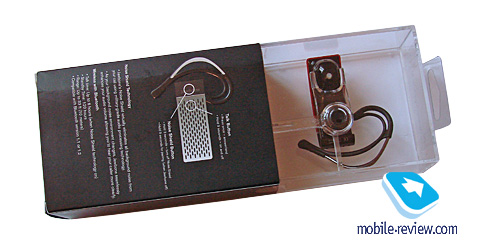
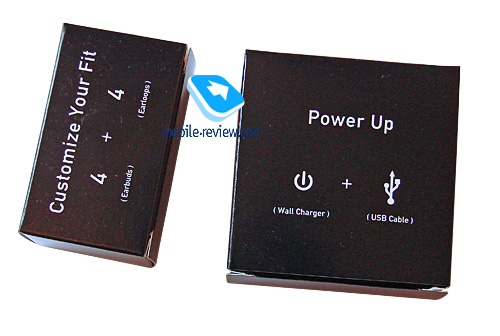

In order not to be unfounded in our opinion on the parallels with Apple-branded solutions, let's take a closer look at the package. It is a transparent box made of plexiglass, with a podium for the headset inside, so at a glance you might think it is hovering in it. Marvelous package, simply brilliant – no one has ever come up with something like this before. Now, look inside to find two carton boxes with other constituents of the standard kit. I think I have already seen it somewhere sometime – maybe in Apple’s products? Like you already read above, the sales package is pretty much ideal – no useless extras, just what you will really need in great quantities, namely: five ear buds and four ear loops. All these goodies differ in size and shape, so you will definitely find the one that suits you best. Moving on to the headset’s looks and design –it comes in a choice of three colors: black, red and grey.

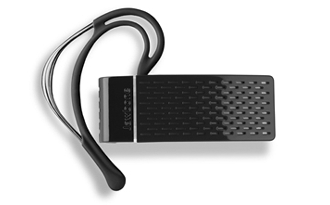
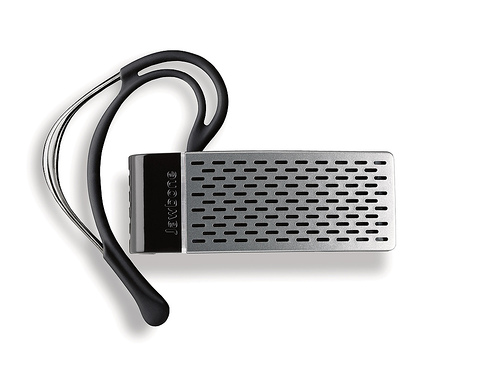
I got my mitts on the headset outfitted in red and while normally I despise such designs, this time around, there is a little feminine in it – all three colors are pretty aggressive thanks to the Jawbone’s design, and on top of that the red color scheme here is by no means “women-only”. Basically, it is only the front panel that differs in color across the range of the Jawbone headsets, further up is a thin transparent strip of a light indicator and a multifunction key, and right under it is a microphone that picks up outside noise. At a glimpse you will never guess there are a button and an indicator on placed on the Jawbone’s casing – they mesh with the surroundings very well and keep low profile. For example, the Pick/hang up button can be identified only by the ridge next to the microphone grill, but more on this in the Controls section. The headset itself is quite bulky, but this is a trade-off for using all these technological gimmicks, so compared to many other today’s headsets, the Jawbone is sort of a giant. Nevertheless, its dimensions will appeal to many – it is noticeable from afar, and is usually taken for an elite accessory, at least this is what we heard from the people we asked. The Jawbone employs one aggressive design, no doubt about that – it shares some cues with high-tech tactical gear and Japanese handsets – front plate clad in metal grill, bulging underside with the lump of the sensor and its bow-like ergonomically-friendly ear loop. “Now that’s cool” are the words you want to say every time you look at the Jawbone. Not only does it look great, it has a quirky charger socket covered by a rubber flap (easy to lose), I have never seen anything like this (pictured below).
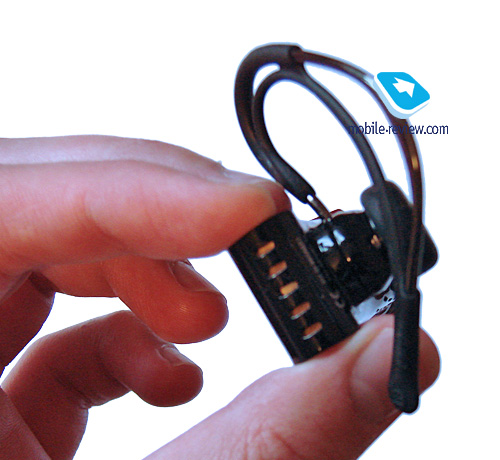
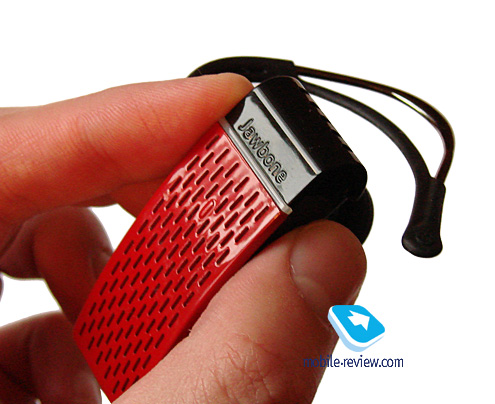
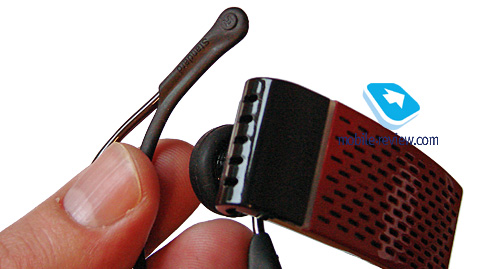
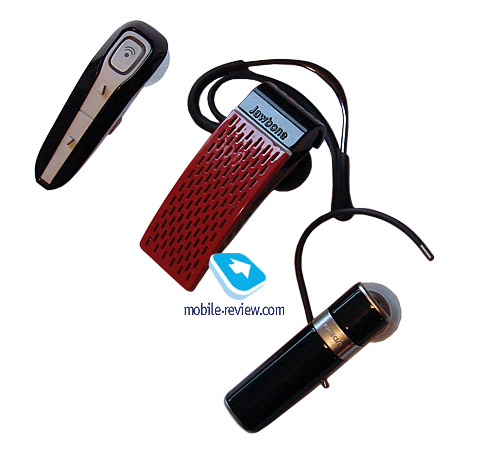
Wearing comfort
You can wear the Jawbone in two ways – with or without the ear loop. Although, the latter option felt quite insecure and I couldn’t get rid of the feeling that it was about to fall off, even though the headset always stayed in my ear. Despite its sizable dimensions, the Jawbone is a lightweight, and it is one of the most comfortable fits I have ever experienced. As you can see, the ear loop retains a queer design – it is a stretched rubber strip rather than a piece of wire that touches your ear, therefore you will never feel pain while wearing the Jawbone. Changing the ear loop’s position couldn’t be simpler – you just need to pull it out and attach from the other side. The slot inside has a spring that pushes the headset, or, better to say, the sensor lump, to your cheek. If you remove the ear loop, you will have to adjust its position so as to get it work properly. Wrapping it all up, I should say that in terms of ergonomics this is quite an offbeat product with a lot of amenities packed for great usability. By the way, I was shocked by all these tiny details the Jawbone retains - look at the ear loop’s tip to find R and L letters; two of the extra ear loops have Standard labels on them, while the other two – Long.
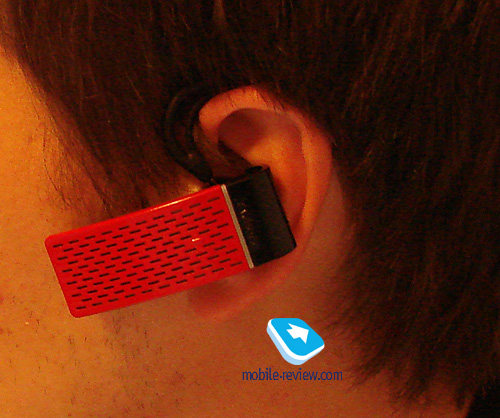
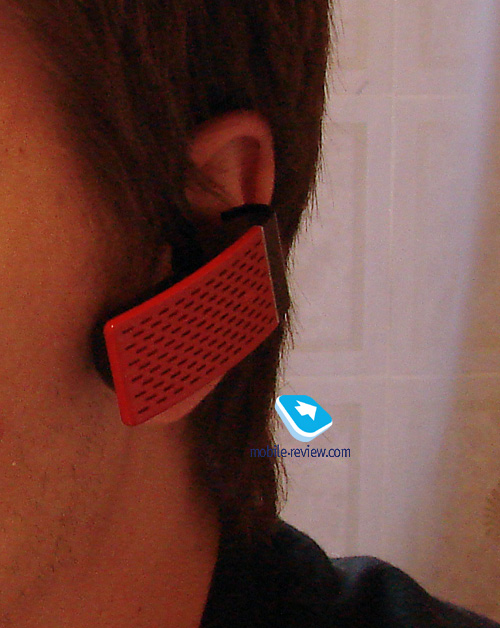
Controls
Like I said the controls are pretty tricky to locate at first, so I strongly recommend that you look though into the guide. The key that pairs the headset with phones and turns it on and off, is embedded into the black plate on the headset’s face, to enable the pairing mode, you just need to switch the Jawbone on, so the indicator stars glowing in white and red. The pick up button is right under the ridge on the front fascia, and is tiny enough to give you a hard time pressing it until you master this key. Again, the Jawbone’s controls are like Pandora’s Box. While the volume level is adjusted automatically, you can take part in this process by hitting the multifunction button – there are five volume settings, pressing the button once switches it to the next level. Say, you pushed it five times already and got to the top volume. Now, tapping it one more time takes you back to the lowest volume, which isn’t great, I suppose you will agree with me. The hang up key was quite spongy, and occasionally I found that after pressing this button and throwing the handset back into my bag, people on the other end were still on the line. After that I started hanging up with my handset, as the Jawbone had lost all its credit. Basically, the headset’s greatest letdowns lie in its controls.
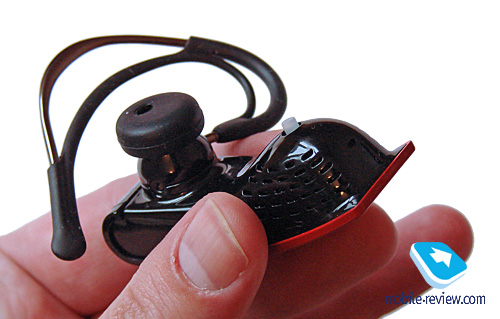

Battery life
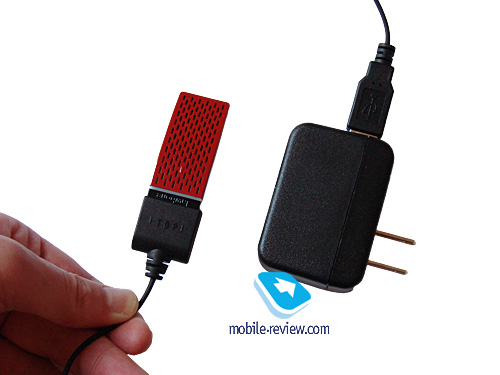
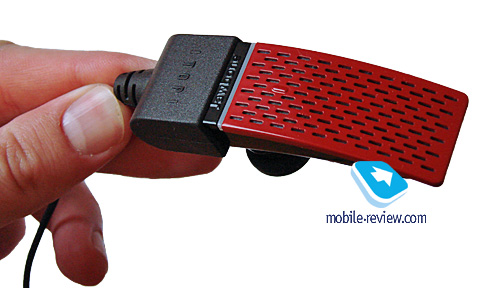
I already said some words about the charger socket, so here are some details. There is a cable with USB plug on its end, which can be used in one of the following manners – either you link it up with your PC or insert into the mains adapter that comes packaged with the Jawbone. It is quite strange, though, that so many reviewers have talked about in-car experience, but I have never read about the missing car charger in their write-ups. The official page doesn’t mention this accessory either. The maker rates the Jawbone’s battery life as being good for 6 hours of talk time and 120 hours of standby. Going back from numbers to words, it is quite mediocre, in real life its talk time is around 4,5 hours. Furthermore, the noise cancellation system hurts the battery life as well, so enabling it every time you make or receive a call shrinks the overall talk time to four hours. I’m not very pleased with this fact. It takes the Jawbone around two hours to charge from empty to full via a PC and 1,5 hours via mains.
Sound quality and connectivity
Pairing the headset with other devices is very straightforward – you turn on the Jawbone, and it switches in this mode automatically. So all you have left to do is detect it with your handset, enter the code (0000) and enjoy your calls. I put it thorough its paces in pair with the Sony Ericsson P1, and, to be honest with you, after hearing all these legends and hype, I was somewhat disappointed right after my first call. Certainly, it sounded clear, produced decent volume, if I was in call-unfriendly environments, I opted to enable the noise cancelling system by holding down the multifunction key for a couple of seconds (you hear a notification signal). And when the system kicked in, it suddenly reminded me of military radio – your voice sounds crystal clear, yet somewhat unnatural. So, I kept the Jawbone on my ear for an evening. Then the next day I put it on again and finally got to like it. It was all about stable performance – while on other headsets DSP may work differently under various circumstances, with the Jawbone you are always positive that your voice will sound clear. And if you happen to find yourself in extremely noisy environments, the noise cancellation system won’t make all the difference, however the Jawbone will still give both ends more voice than outside noise, which is a good thing.
All extra features like redial works properly, however the stiff buttons spoil the otherwise positive experience a bit.
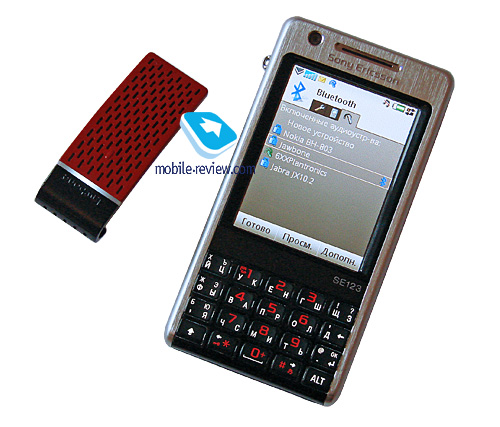
Conclusion
After more than eight days of quality time with the headset I wanted to find out whether all this tuning and technological talents are really worth it. See for yourself: the Jawbone goes for about 110-120 USD, when it crosses the borderline here, its price tag rockets up to 180 USD or so. I decided to put it up against the Nokia BH-803, which will cost a tad more in Europe, for it is a fashion-savvy solution coming in with a pretty straightforward DSP system. I brought in a volunteer, who actually happened to be a friend of mine, a headset geek, handed him both gadgets and asked to give me his thoughts. And this is how it all turned out (both headsets were tested in pair with the Nokia N95):
| |
Jawbone |
BH-803 |
| Sound quality |
Liked it, in the active noise reduction it gave an impression of a half-duplex |
Liked it as well – natural sound, the other end reported good voice quality, however sitting next to an open window or radio made our contacts complain about outside noise |
| Design |
Classy looks, great fit |
No different from the Jawbone |
| Battery life |
Lasted a day – over three hours of calls made it glow in red in the evening |
Never ran out of power – 1,5 hours of calls, then returned it to the owner |
| Controls |
The answer button is fiddly |
Everything is handy |
Ultimately, he gave his nod to the BH-803 – I had a real hard time tearing it from his hands. And I will chime in with everything he had to say. I do realize that above everything else, the Jawbone is a phenomenon. Judged as a headset, it is pretty competent, but nothing out of this world, all these goodies may prove worthless to you, and there is a whole lot of other solutions that will do the job equally well. Nevertheless, I’m firm in my decision to get a black Jawbone. Now you try to stop me!
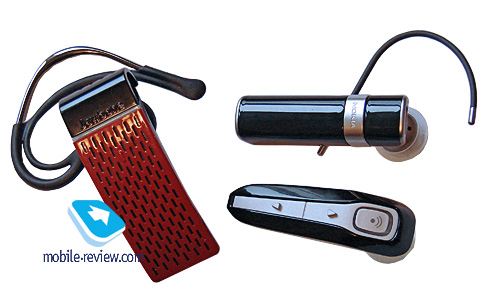
I feel somewhat sorry to wind up the review with such a prosy passage – we always want daydream a bit and image what might be coming up. The thing I’m confident in is that Aliph has rolled out a headset that makes a statement, in the sense that all this gas (best design, military technologies, a pile of awards, status, etc) settles down in minds of average consumers (who don’t care about details and tricky sides of their devices) for good, so that all other things are taken somewhat lightly. So, what is coming next? I suppose it won’t be too long before we see something like the Jawbone 2, coming in a more portable casing with better controls, Multipoint support and all the amenities carried over from the Jawbone we are reviewing here. It stands to reason that they could make a stereo-headset – the Jawbone Stereo, but if that was the case, would they be able to keep the sound quality up to scratch? Do they really need this? I suppose Aliph would be better off with one stellar product a year scheme, being somewhat above the market, steering clear of other manufacturers. I guess that will be for the best for Aliph. It would be even better if they opened a small boutique somewhere in Moscow, ran a short advertising campaign to enjoy more than adequate sales of their nifty gadget – potential buyers would flood this outlet for sure.
Technical specifications:
- Bluetooth 1.2
- Weight: 13.5 grams (Mobile-Review measurements)
- Talk time: 6 hours
- Standby time: up to 120 hours
- Way of wearing: ear loop, can be detached
Sergey Kuzmin (skuzmin@mobile-review.com)
Translated by Oleg Kononosov (oleg.kononosov@mobile-review.com)
Published — 28 September 2007
Have something to add?! Write us... eldar@mobile-review.com
|
News:
[ 31-07 16:21 ]Sir Jony Ive: Apple Isn't In It For The Money
[ 31-07 13:34 ]Video: Nokia Designer Interviews
[ 31-07 13:10 ]RIM To Layoff 3,000 More Employees
[ 30-07 20:59 ]Video: iPhone 5 Housing Shown Off
[ 30-07 19:12 ]Android Fortunes Decline In U.S.
[ 25-07 16:18 ]Why Apple Is Suing Samsung?
[ 25-07 15:53 ]A Few Choice Quotes About Apple ... By Samsung
[ 23-07 20:25 ]Russian iOS Hacker Calls It A Day
[ 23-07 17:40 ]Video: It's Still Not Out, But Galaxy Note 10.1 Gets An Ad
[ 19-07 19:10 ]Another Loss For Nokia: $1 Billion Down In Q2
[ 19-07 17:22 ]British Judge Orders Apple To Run Ads Saying Samsung Did Not Copy Them
[ 19-07 16:57 ]iPhone 5 To Feature Nano-SIM Cards
[ 18-07 14:20 ]What The iPad Could Have Looked Like ...
[ 18-07 13:25 ]App Store Hack Is Still Going Strong Despite Apple's Best Efforts
[ 13-07 12:34 ]Infographic: The (Hypothetical) Sale Of RIM
[ 13-07 11:10 ]Video: iPhone Hacker Makes In-App Purchases Free
[ 12-07 19:50 ]iPhone 5 Images Leak Again
[ 12-07 17:51 ]Android Takes 50%+ Of U.S. And Europe
[ 11-07 16:02 ]Apple Involved In 60% Of Patent Suits
[ 11-07 13:14 ]Video: Kindle Fire Gets A Jelly Bean
Subscribe
|






















